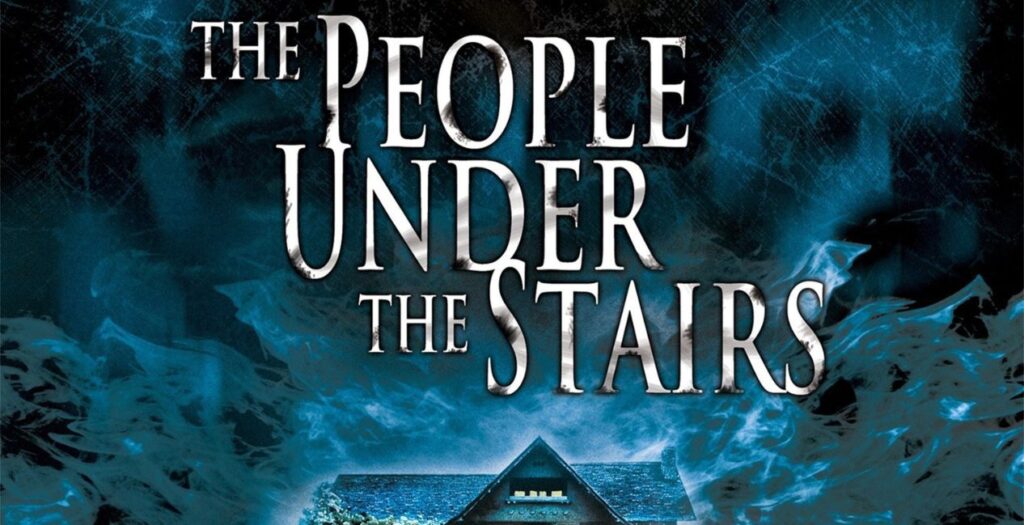In the world of horror, Wes Craven is primarily known for the infamously controversial The Last House on the Left (1972), The Hills Have Eyes (1977), A Nightmare on Elm Street (1984), New Nightmare (1994), and the first 4 films in the Scream franchise. Sadly, he passed away in 2015 due to a brain tumor, but his legacy and lasting impact on the horror genre remains. And that includes the lesser-discussed (as far as his filmography) The People Under the Stairs (1991).
The People Under the Stairs follows a boy nicknamed “Fool” (Brandon Adams) who gets trapped inside the house of the corrupt landlords who own his apartment complex after a robbery gone wrong. The themes throughout The People Under the Stairs are quite topical, and there’s much to appreciate from the set designs and performances from final boy Brandon Adams, Everett McGill, and Wendy Robie. It’s worth a revisit or a first-time watch if you’re new to this Craven gem. Why else should you watch The People Under the Stairs? Keep reading to find out.
The Representation in Its Final Boy

Final boys in horror haven’t always been the most diverse. Discussing representation across the board regarding horror is sometimes challenging for that reason. However, there are gems out there that give us final boys of color. Night of the Demons (1988), in particular, has an example of a Black final boy that people might cite. In this case, “Fool” is another one, and his bravery and vulnerability throughout the film are quite refreshing.
Instead of “Fool” being forced into stereotypes regarding how Black men are supposed to behave, he’s allowed to show emotions as well as be scared. The reality of his home life is on full display, and it’s not played for laughs. He lives in an apartment that hasn’t been maintained inside or outside. His mother is bedridden and sick with cancer, and they are on their way to being evicted. That leads “Fool” to join his sister’s friend in his attempted robbery of their landlord’s home. And in the end, “Fool” is the one who defeats his capitalistic landlords.
The Themes

It bears repeating that horror is a very political genre, and The People Under the Stairs isn’t afraid of tapping into social issues. While there are plenty of satirical beats, especially because of “Daddy” and “Mommy,” there’s no ignoring how evil they are. Displacing an apartment complex inhabited by poor or BIPOC tenants is despicable. And it’s also something that’s not unusual in our real world.
Social commentary on stage capitalism, gentrification, class conflict, and conservatism is blatant throughout the film. According to Wes Craven on the 2015 commentary track for Scream Factor’s release of the film, these themes are even depicted in regard to the structure of the house. The people stuck in the basement are another representation of how “Mommy” and “Daddy” view marginalized groups of people. They are quite entirely standing above them and hold all the power by way of abuse and wealth status.
Overall, these themes are a huge part of what makes The People Under the Stairs so topical. For those interested in horror that explores capitalism, then this is the perfect film for you.
The Performances

For satire to be effective, there usually needs to be good performances behind the material. First and foremost, Adams’ portrayal as “Fool” is endearing, especially for a child actor. Going up against adults working with character material bound to stand out is quite the feat. Yet, Adams can knock it out of the park by breathing life into “Fool” as a character. He’s not a stereotypical Black child who’s depicted as gang-influenced. Instead, he’s a sensitive boy who loves his mother and sister and has little choices outside of a desperate robbery attempt.
Regarding the performances of Everett McGill as “Daddy” and Wendy Robie as “Mommy,” they are terrifying as well as satirical. McGill and Robie capture your attention in nearly every scene they’re in with their absurd dialogue and behavior. They are conservatives who are aggressively deranged, abusive, and very clearly incestuous (as they come from a familial line of inbreeding). Other understated performances in the film include A.J. Langer as Alice Robeson, who is a child that they’ve forced to be their adoptive daughter, as well as Sean Whalen as Roach, who lives in the walls of the house.
Each of those key performances contributes to the film’s success as a comedy horror film that still resonates with its themes.
If you happen to be in need of a comedy horror that won’t fail to remind you of its social themes, then look no further. The People Under the Stairs is just as much of a classic film of Wes Craven’s and more people should watch it if they haven’t. Not to mention, it can be absolutely included in the Black horror canon. And that’s a bonus for Black horror fans all around.
The People Under the Stairs isn’t currently available to stream, but you can rent it digitally.







